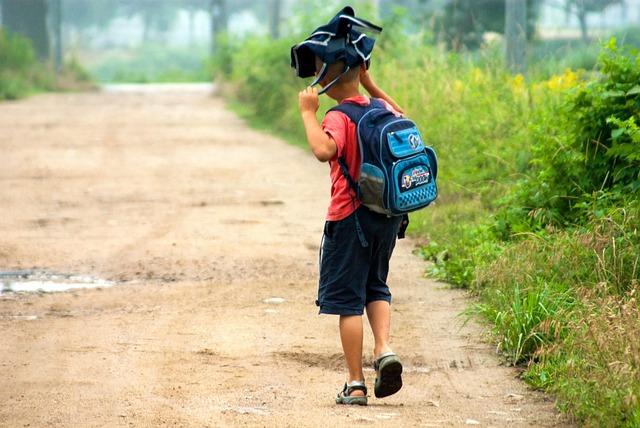Declining School Attendance Tied to Immigration Enforcement Anxiety in Chicago
Recent statistics from Chicago Public Schools indicate a marked reduction in student attendance across several predominantly immigrant neighborhoods. This downturn coincides with escalating apprehension among immigrant families due to intensified Immigration and Customs Enforcement (ICE) operations. Many parents are opting to keep their children at home, fearing potential immigration encounters during school commutes, which disrupts both educational progress and social development.
Educators and community advocates stress the importance of establishing trust and transparent policies to safeguard students’ rights to a secure educational environment. Primary concerns raised include:
- Uncertainty surrounding ICE activities near educational institutions
- Limited access to vital school services such as counseling and extracurricular programs
- Heightened emotional distress impacting students and their families
| Community | Percentage Decrease in Attendance | Approximate Number of Students Absent |
|---|---|---|
| Pilsen | 13.2% | 190 |
| Little Village | 16.5% | 230 |
| Hermosa | 10.3% | 100 |
Academic and Community Consequences of Attendance Decline
The drop in attendance has far-reaching effects beyond classroom presence,substantially impacting students’ academic outcomes and emotional well-being. Teachers report that frequent absences disrupt lesson continuity and hinder student engagement. Those attending school often exhibit signs of anxiety and distraction, stemming from fears of family separation or immigration enforcement, which negatively affects their concentration and academic performance.
Moreover, the wider community experiences increased social fragmentation. Schools and local organizations observe growing isolation and mistrust among residents, weakening neighborhood solidarity. Families’ preference for privacy over participation further challenges efforts to foster inclusive, supportive environments. Notable impacts include:
- Widespread attendance reductions across multiple schools
- Decreased utilization of essential school-based support services
- Rising incidence of anxiety and stress-related symptoms among students
- Lower parental involvement in school activities and events
| Area Affected | Observed Change |
|---|---|
| Student Achievement | Approximately 15% decline in standardized test scores |
| Mental Health Services | 25% increase in counseling referrals |
| Community Participation | 40% drop in family attendance at school events |
Advocacy for Policy Reform and Transparent Communication
City educators and community advocates are pressing for enhanced protective policies to shield undocumented students and their families. They highlight the necessity of clear, consistent messaging from both school authorities and immigration agencies to rebuild confidence and reduce fear. Suggested initiatives include designating schools as safe zones, improving confidential reporting mechanisms, and launching multilingual outreach campaigns to educate families about their rights.
In response, the school district has initiated several measures aimed at addressing attendance concerns, such as:
- Providing staff training focused on immigration-related cultural competence
- Partnering with legal aid organizations to offer family support
- Regularly communicating updates on district policies concerning ICE enforcement
| Initiative | Objective | Current Status |
|---|---|---|
| Safe Zones | Ensure student protection on school grounds | Under evaluation |
| Staff Training | Enhance awareness and sensitivity | In progress |
| Legal Assistance | Provide resources and guidance to families | Ongoing |
Effective Support Strategies for Immigrant Families Facing Enforcement Fears
Schools and community groups are instrumental in easing immigration-related anxieties by cultivating trust with families. Establishing confidential communication channels allows families to voice concerns safely without fear of exposure. Additionally, equipping educators with training on cultural awareness and immigration rights empowers them to offer accurate details and compassionate support, countering misinformation that fuels fear.
Practical approaches have shown promise.Such as, some districts have implemented “sanctuary zones” where ICE agents are prohibited, reassuring families that schools remain safe havens.Collaborations with local legal aid providers also facilitate accessible consultations for families navigating immigration challenges. Below is a summary of key strategies adopted across Chicago to assist affected families:
| Strategy | Execution | Outcome |
|---|---|---|
| Confidential Communication | Dedicated hotlines and private consultations | Improved trust and increased reporting of concerns |
| Staff Training | Workshops on cultural competence and legal rights | Stronger family-school relationships |
| Sanctuary Zones | Restricted ICE presence on school property | Higher attendance and enhanced sense of security |
| Legal Partnerships | Free legal clinics and resource referrals | Empowered families with advocacy tools |
Conclusion: Addressing Attendance Challenges in Immigrant Communities
As Chicago schools confront ongoing attendance challenges fueled by immigration enforcement fears, educators and community leaders underscore the critical need for transparent communication and robust support systems to ensure students feel secure attending school. This issue reflects broader obstacles faced by immigrant families and highlights the essential role of schools as protective environments. Moving forward,coordinated efforts among policymakers,school officials,and advocacy organizations will be vital to restoring trust and fostering educational equity within these communities.







